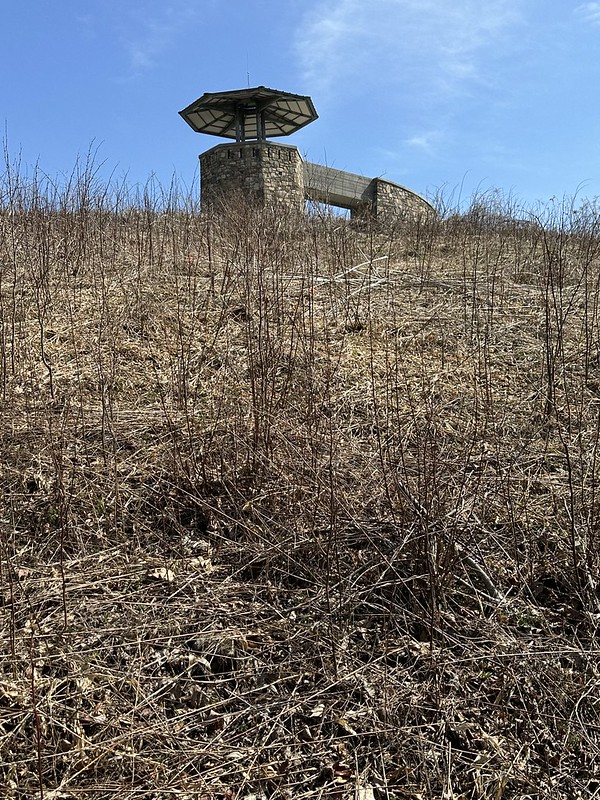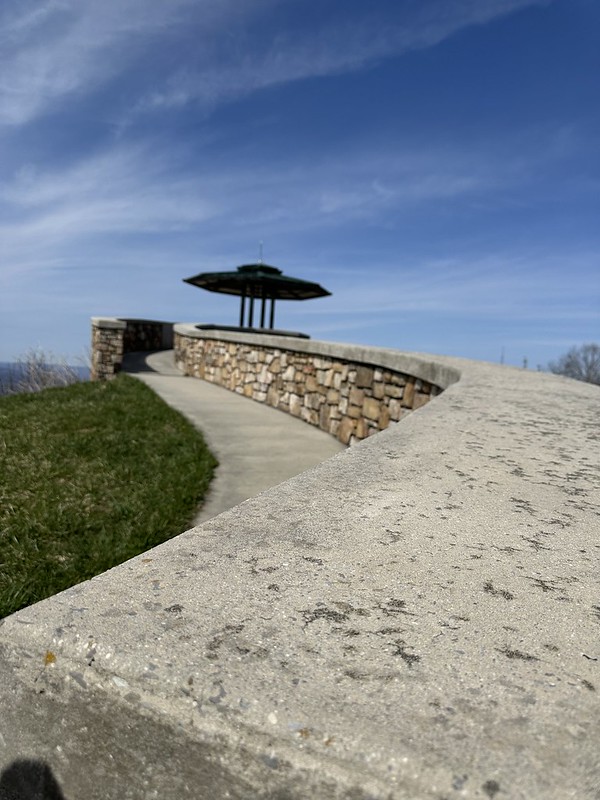Repurpose Appalachia Series

Being perched between 4,100 and 4,223 feet on the rugged spine of Stone Mountain, the modern High Knob Observation Tower greets each sunrise with a gleam of galvanized steel on sandstone. Long before it became a scenic waypoint for motorists and hikers near Norton, Virginia, High Knob’s summit served an urgent purpose: keeping watch for wildfire. From a humble 14‑by‑14‑foot log cabin built by New Deal laborers to today’s wheelchair‑accessible stone rampart, the tower’s story mirrors the region’s blend of hardship, resilience, and community pride.
From Fire Lines to Scenic Landmark (1938‑1939)
At the tail‑end of the Great Depression, a Civilian Conservation Corps crew hewed chestnut logs and hoisted a lookout cabin onto High Knob’s windy crown. The tiny structure offered rangers a 360-degree panorama—on clear days, distant ridgelines from multiple states shimmered on the horizon, with some claiming as many as five—and it helped safeguard the Jefferson National Forest from lightning-sparked blazes. That same CCC camp carved a four‑acre lake and picnic grounds just below the peak, seeding what would become the High Knob Recreation Area.

A Tower Reimagined (1978‑1979)
After four decades of harsh mountain weather, the original cabin was showing its age. Enter the Flatwoods Job Corps, whose trainees erected a three‑story wooden tower atop a stone base in 1978. The U.S. Forest Service still posted fire watchers there, but locals quickly embraced the taller perch as a Sunday‑drive destination. Marriage proposals, family reunions, and high‑school prom photos all unfolded against the five‑state vista, weaving the tower into the cultural fabric of Wise and Scott counties.
Halloween Inferno & Community Resolve (2007)
Disaster struck in the small hours of October 31, 2007, when arsonists torched the 1970s tower. Flames lit the night sky, visible for miles, and by dawn only charred beams jutted from the summit. Heartbroken residents might have left the mountaintop bare, but instead they rallied. Environmental groups, coal companies, schoolchildren, and elected officials formed the High Knob Enhancement Corporation and, quarter by donated quarter, raised roughly $600,000 to build the tower anew.

A Stone‑and‑Steel Revival (2014)
Construction crews broke ground in 2013, hauling in sandstone blocks and rolled‑steel framing designed to laugh at both fire and 100‑mph ridgetop winds. On August 22, 2014, the new High Knob Observation Tower opened to the public. A gently graded loop trail and bridge now deliver wheelchair users directly onto the viewing deck—a rarity among Appalachian fire‑tower sites. Interpretive panels orient visitors to distant landmarks such as Mount Rogers, Pine Mountain, and the Great Smoky Mountains while a stout metal roof offers shade (and occasional refuge from fast‑moving storms).
Legacy & Visiting Today
High Knob Tower stands as both sentinel and storyteller. It recalls an era when men scanned smoky horizons for danger, yet it also anchors a 21st‑century network of hiking, biking, and paddling trails that fuel outdoor tourism across Southwest Virginia. The surrounding recreation area still boasts its spring‑fed lake, seasonal campground, and trailheads for the 15‑mile Chief Benge Scout Trail. Best of all, the tower remains free and open year‑round—just follow VA Route 619 to the summit parking lot and take the short, universally accessible path to the base.
Whether you climb the steps or roll the ramp, linger a moment at the rail. Feel the wind spill over Stone Mountain, watch the Blue Ridge fade into the Cumberland Plateau, and remember that every block and beam beneath your boots rose from the determination of a community that refused to let its landmark burn out of memory.
Sources & Further Reading
High Knob — Wikipedia
“High Knob Recreation” — ExploreScottCountyVA.org
National Historic Lookout Registry entry for High Knob Tower
“Hope Rises From the Ashes of High Knob Tower” — The Appalachian Voice, Oct.–Nov. 2014
USDA Forest Service project summary on the 2013‑14 reconstruction
Kingsport Times‑News coverage of the 2007 arson
U.S. Forest Service – High Knob Tower
High Knob Enhancement Corporation
Explore Scott County – Chief Benge Scout Trail
Appalachian Voices – “Hope Rises From the Ashes of High Knob Tower”:
Author’s Note: This piece is part of the Repurpose Appalachia series, an ongoing exploration of Appalachian communities that are embracing change—reclaiming their heritage, fostering innovation, and building a sustainable future. Join us as we share stories of adaptation, resilience, and the enduring spirit of these mountain towns.